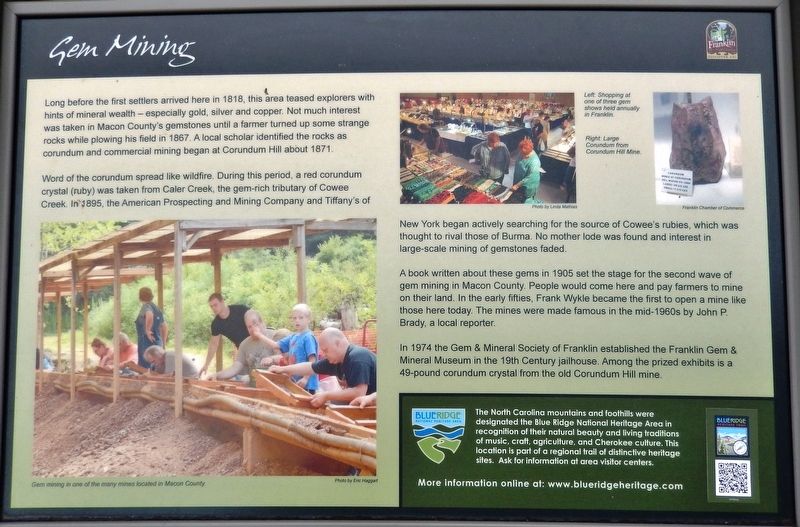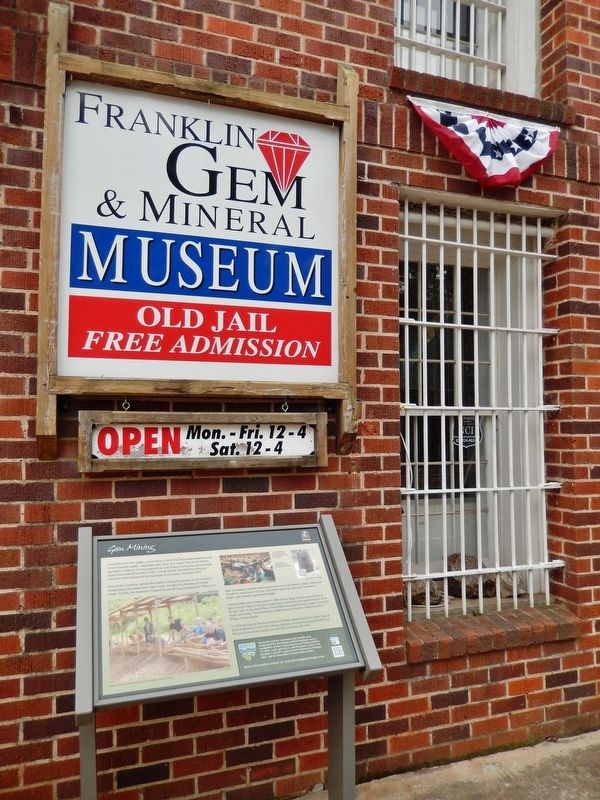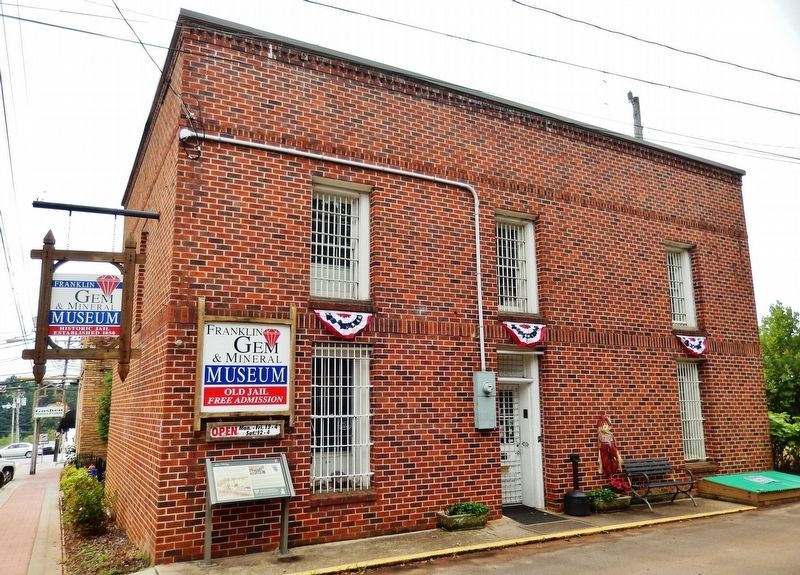Franklin in Macon County, North Carolina — The American South (South Atlantic)
Gem Mining
Word of the corundum spread like wildfire. During this period, a red corundum crystal (ruby) was taken from Caler Creek, the gem-rich tributary of Cowee Creek. In 1895, the American Prospecting and Mining Company and Tiffany's of New York began actively searching for the source of Cowee's rubies, which was thought to rival those of Burma. No mother lode was found and interest in large-scale mining of gemstones faded.
A book written about these gems in 1905 set the stage for the second wave of gem mining in Macon County. People would come here and pay farmers to mine on their land. In the early fifties, Frank Wykle became the first to open a mine like those here today. The mines were made famous in the mid-1960s by John P. Brady, a local reporter.
In 1974 the Gem & Mineral Society of Franklin established the Franklin Gem & Mineral Museum in the 19th Century jailhouse. Among the prized exhibits is a 49-pound corundum crystal from the old Corundum Hill mine.
More information online at: www.blueridgeheritage.com
Topics. This historical marker is listed in these topic lists: Industry & Commerce • Natural Resources. A significant historical year for this entry is 1867.
Location. 35° 10.888′ N, 83° 22.869′ W. Marker is in Franklin, North Carolina, in Macon County. Marker is at the intersection of Phillips Street and Stewart Street, on the right when traveling south on Phillips Street. Marker is located beside the sidewalk at the northeast corner of Franklin's Gem & Mineral Museum. Touch for map. Marker is at or near this postal address: 25 Phillips Street, Franklin NC 28734, United States of America. Touch for directions.
Other nearby markers. At least 8 other markers are within walking distance of this marker. Battle of Echoe (a few steps from this marker); Macon County Confederate Memorial (a few steps from this marker); Built in 1921 (within shouting distance of this marker); The North Carolina Bartram Trail (within shouting distance of this marker); Thomas's Legion
(within shouting distance of this marker); Dixie Hall (within shouting distance of this marker); William Bartram Naturalist (within shouting distance of this marker); Nikwasi Mound (approx. half a mile away). Touch for a list and map of all markers in Franklin.
More about this marker. Marker is a large composite plaque, mounted horizontally on waist-high posts.
Related markers. Click here for a list of markers that are related to this marker. Blue Ridge Heritage Trail
Also see . . .
1. Gem Mining. Comprising a complex mixture of igneous, sedimentary and metamorphic rocks that have been repeatedly squeezed, fractured, faulted and folded, North Carolina’s Blue Ridge mountains contain some of the richest deposits of gems and minerals in the world, many of which can be found in and around Franklin, North Carolina. (Submitted on September 12, 2018, by Cosmos Mariner of Cape Canaveral, Florida.)
2. Ruby. A red, gem variety of corundum. The red color is caused by minor amounts of trivalent Cr replacing Al in the crystal structure. In traditional gemological terms, ruby has to be blood-red and of clear, facetable quality to justify the name, however in wider usage any corundum with a red or reddish color has attracted the name "ruby", and this name is usually applied in this way by mineral collectors. Pink corundum is usually referred to in gemological terminology as pink sapphire rather than ruby. (Submitted on September 12, 2018, by Cosmos Mariner of Cape Canaveral, Florida.)
Credits. This page was last revised on September 15, 2018. It was originally submitted on September 12, 2018, by Cosmos Mariner of Cape Canaveral, Florida. This page has been viewed 568 times since then and 60 times this year. Photos: 1, 2, 3, 4. submitted on September 12, 2018, by Cosmos Mariner of Cape Canaveral, Florida. • Andrew Ruppenstein was the editor who published this page.



